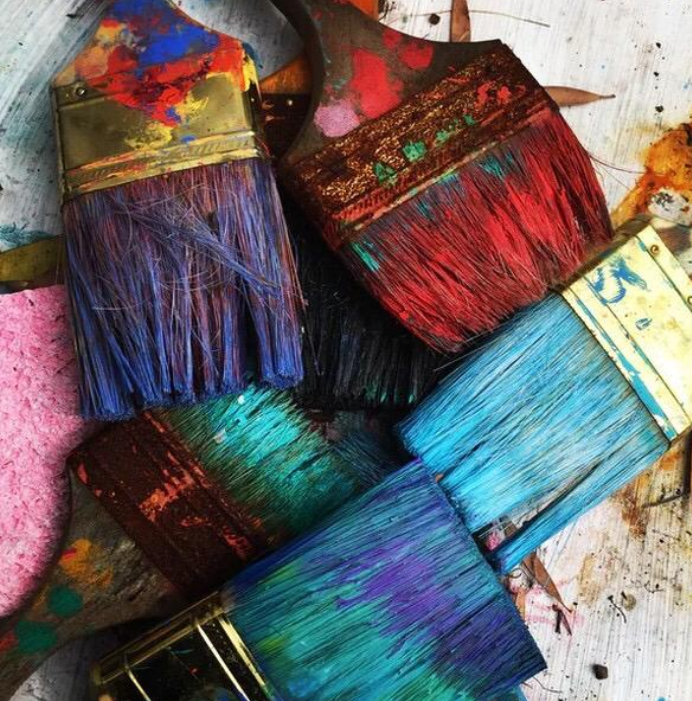
I doubt there’s a single high school student that is NOT unaware of plagiarism and its consequences- because really, what student hasn’t had their teacher give them a lecture on the ethics of plagiarism and the longstanding consequences it can have on academic reputation? (not to mention all those unreasonably long school assemblies). But while most of you are probably acquainted with how plagiarism works in writing, when it comes to art, and the line between what is permissible and what isn’t is often blurred more frequently than you would expect. Especially with how easy social media has made it to plagiarize.
Take the current Inktober skirmish. Inktober is a month-long art challenge created by Jake Parker, that artists around the world participate in every October by creating an ink drawing every day and posting it online- as an artist, I’ve found that it’s a great way to help improve my own skills. This year, Jake Parker announced the creation of his own ‘Inktober all year long’ sketchbook, to help other artists with ink-illustration techniques. And this is where things started to get messy.
A few weeks ago, Alphonso Dunn, another pretty well known ink-artist on Instagram, with 192.4k followers, though considerably smaller in comparison to Parker’s 574k, released a video comparing the book to his own ‘Pen and Ink Drawing’ guide and claiming that Parker had plagiarised it (eeps). As of now, Parker’s book, which was meant to be released on September 15, is on hold, as matters have been taken into legal hands. What complicates things is the fact that SO MANY art books have VERY similar techniques and illustrations to each other, so while some think that Dunn’s claim doesn’t have much of a legal basis, others find that the structure of the book and types and numbers of techniques are far too similar to be ‘just a coincidence‘.
The Inktober issue is a PRETTY big case of plagiarism, and far more unusual- though (if the accusations are true) events where larger, more influential artists claim smaller, less-known artists’ work for their own unfortunately do still occur. But lots of smaller, albeit equally important cases of art plagiarism happen every day and go unnoticed. Indeed, if the line between ‘plagiarism’ and ‘artistic inspiration’ is so hazy, what exactly constitutes plagiarism? So, to make sure you know what and what NOT to do, here’s a list of the three main things you should be aware of when it comes to posting art online:
1.Let’s start with the glaringly obvious. Don’t pass off someone else’s work as your own. Now this INCLUDES filtering or altering the piece of art in any way i.e. with text, colours, collating a bunch of different pieces together, drawing on top of it. None of that makes it your own. Unless you have express permission from the artist to alter the image, and you reference them in your post, it still counts as plagiarism. Even just reposting without getting the artist’s permission isn’t acceptable, so please, do avoid these at all costs.
2. Tracing. This is generally defined as reproducing an image, with very little alteration. And yes, tracing someone else’s art, colouring it and passing it off as your own IS art theft. It doesn’t matter how many minor alterations you make to the drawing or colour scheme, so long as the general structure and composition remains the same, it is plagiarism.
3.Referencing. Now, this can get a bit complicated. So referencing in itself is not bad, as someone who creates art myself, I often need to pull up a photograph or a sketch to make sure that, say, the angle at which I’ve drawn a bent arm is accurate. What is NOT, however, is copying the placement of about everything in another person’s piece, be it a photograph or another medium, and calling it your own. Or a ‘tribute’ to the original. Unless you VERY clearly reference their artist (preferably at the top of your post, so everyone who sees it is clear on it) it is very much still plagiarism.

What needs to be understood is that ALL works (no matter who or how small or influential the artist is) of ALL media are covered by an understood copyright. On social media this often isn’t so much about money (though that plays an important role too- many artists make their livelihoods off of the art they sell) as much as ownership. So the next time you want to make a mood board, either pay for stock photos or use free sites, like Unsplash. And do make sure to apologise if you have done something that counts as plagiarism in the past. It’s fine if you were unaware of it before, but now that you are, you’ve gotta take responsibility. I’m sure that any artist will be glad that you understand and regret where you went wrong.
Artists put a lot of time, effort and money into their work, and what you see is often the result of HOURS and HOURS of hard-work and trial and error. So do keep these tips in mind and stay respectful. And of course, it is always great if you support them by sharing their work on your story, buying their pieces and reposting their work with their permission- they would absolutely appreciate the exposure!
Written by: Rachel Dayis
